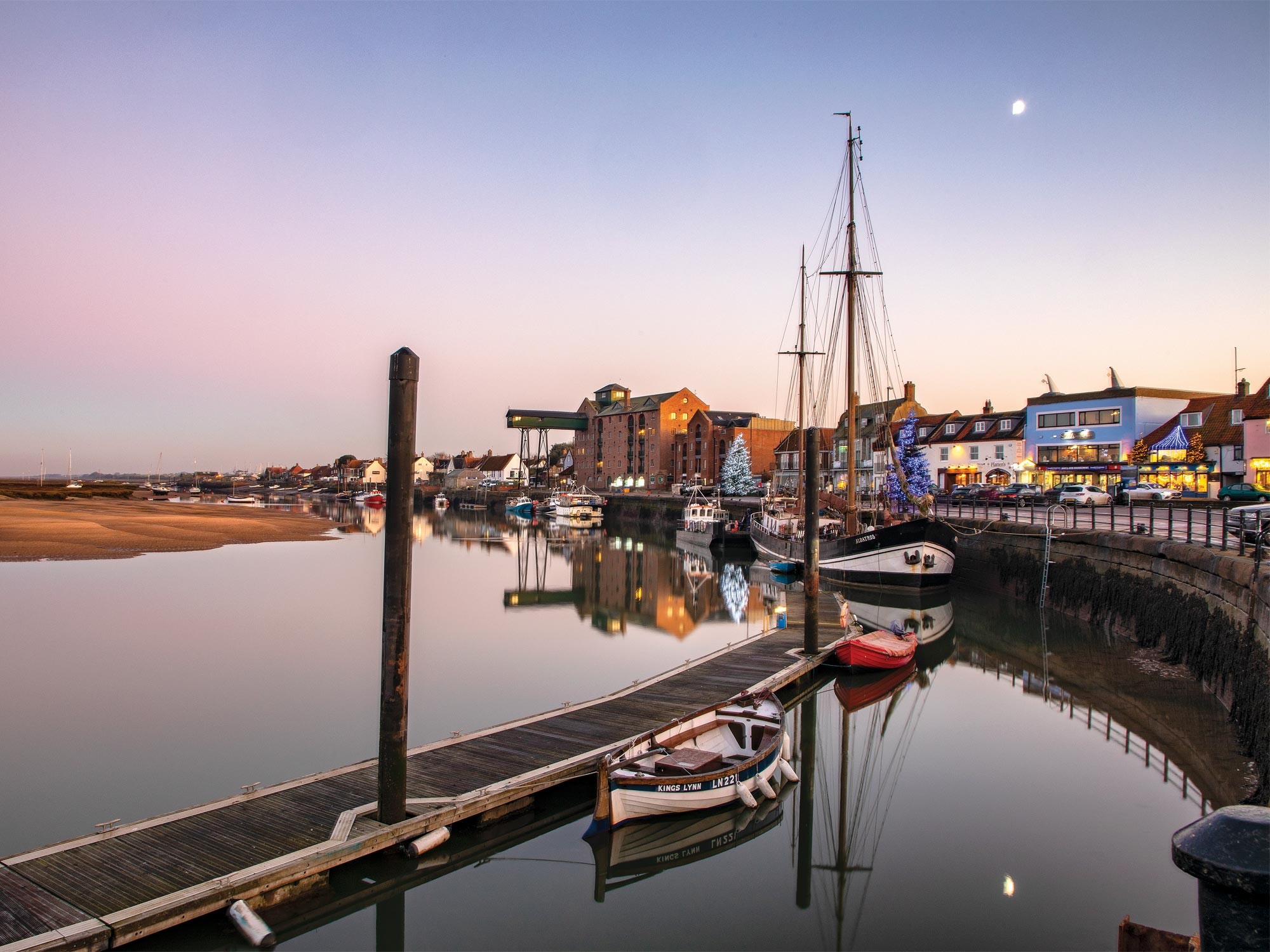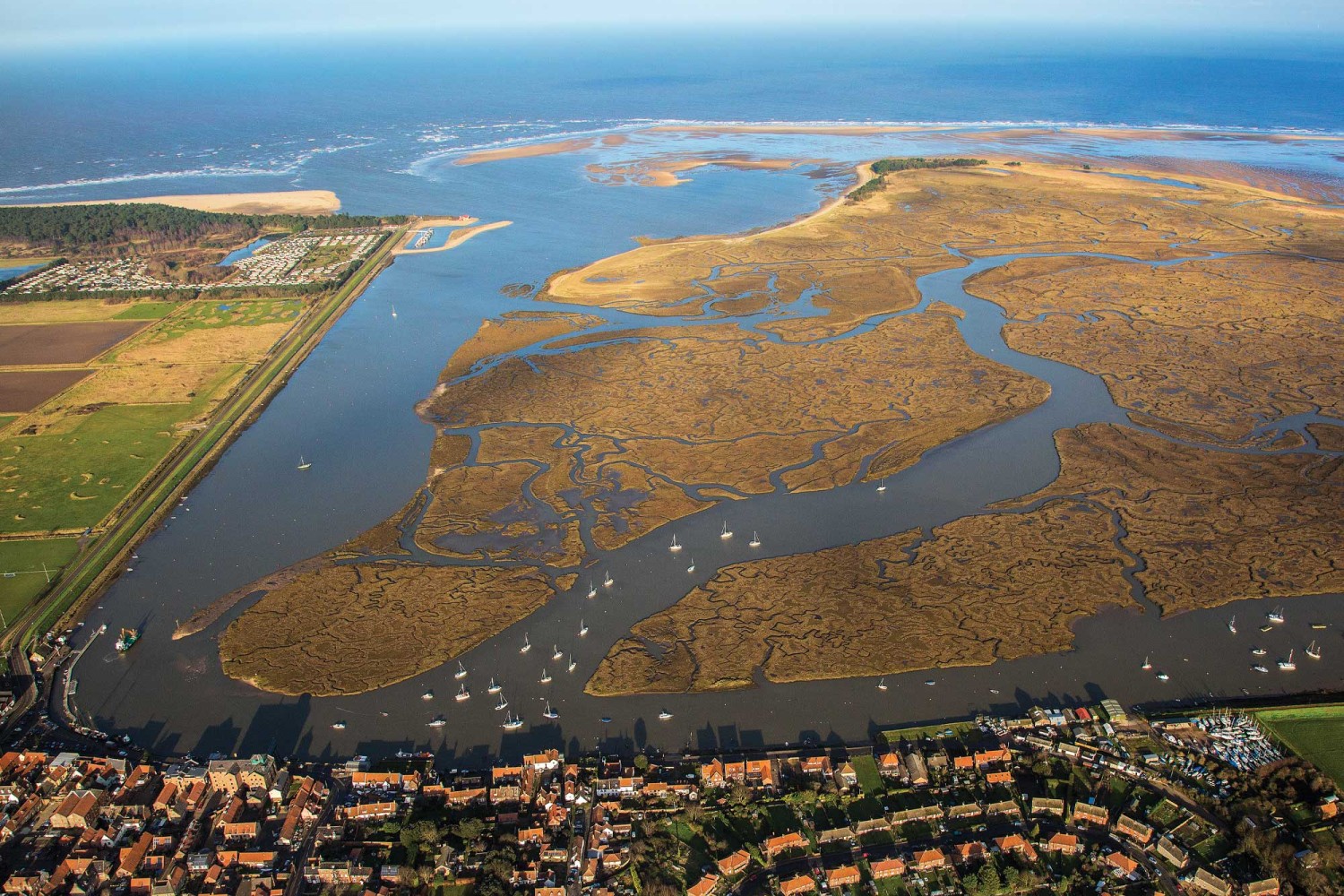
An iconic location and a rich maritime history
At one time the harbour of Wells-next-the-Sea was one of the most important ports in the country, and it’s still one of the most beautiful
Today Wells-next-the-Sea is one of the most popular and beautiful locations on the coast of north Norfolk, and thousands of people visit it throughout the year for its stunning beauty, exceptional restaurants and friendly atmosphere.
Few of those visitors realise just how important the town was as a seaport - or that it started supplying grain to London as early as the 14th century. Within a few years the town was also supplying the miners of the northeast (in return for coal) and by 1580 Wells was the major port in the area, being home to 19 ships of over 16 tons.
Malt was another major product and at one time Wells could boast no less than 12 maltings - in 1750 the town was responsible for over 30% of the entire country’s malt exports.
Given the riches and quality of the coast’s natural produce, Wells also became a significant fishing port - as early as 1337 it was operating 13 fishing boats, bringing seafood and fish (particularly cod and herring) into the town.
The famous quayside so popular with visitors today is the result of a major rebuild in 1845 as part of attempts to improve the town to satisfy the growing tourist trade - which only grew when the railway arrived some 10 years later.
Despite that, Wells was still building ships until the late nineteenth century and the port underwent something of a revival during the late 1970s with ships of up to 300 tons unloading on the quay. As late as 1982 there were still 258 ship movements into (and out of) the harbour.
In fact commercial trade in the town probably only ended in the late 1990s with the last shipments of grain brought from Europe by the Dutch sailing ketch Albatros, which was thought to be the last commercial trading vessel under sail in Europe. Today the beautiful ship (it’s now one of the oldest sailing ships still afloat) is permanently moored on the quayside and is a hugely-popular bar, restaurant, B&B and music venue.

Don’t think that Wells is resting on its 600-year-old laurels, however. The town retains a vibrant fishing fleet, with the domestic boats joined by fishing vessels from all over the UK and Europe - and the harbour has become even busier in recent years with various vessels engaged in survey, crew transfer and safety boat operations for the Sheringham Shoal offshore windfarm. Officially opened in September 2012, it generated enough electricity in its first 12 months (1.2TWh) to power the whole of the London Underground for an entire year.
In addition, the harbour at Wells increasingly caters for leisure activities, offering sea angling trips, hosting a thriving sailing and water ski club, and being one of the popular spots in Norfolk for the long-established tradition of ‘gillying’ - better known as crabbing.
Wells has also operated a lifeboat for almost 200 years, and the old lifeboat house is now home to the harbour offices. The planned replacement of the current boat next year will require a much larger station, and the fate of the station at the harbour entrance is uncertain.
The distinctive memorial adjacent to the harbour offices commemorates the lifeboat disaster of October 1880, when 11 of the 13 crew drowned while assisting the 171 ton Ocean Queen - a tragedy that left 10 widows and made 27 children fatherless. The only survivors were William Bell, who managed to stay with the lifeboat until it righted itself, and Thomas Kew, was washed ashore alive.
If you’re interested in taking a deeper and fascinating look at the history of Wells harbour and its future, look no further than Crossing the Bar - the brilliant book written by long-serving harbour master Robert Smith MBE and Zoe Dunford from the Wells-based Coastal Exploration Company.
Containing a wealth of historical detail and colourful events from smuggling to secret wartime experiments, it was described by The Guardian as “a hymn to the most beautiful coastline in the world.”
The harbour at Wells has got a rich and fascinating history - but it has an even more exciting future.
For the latest news including tide times, mooring availability and details of the Wells Harbour Maritime Trust, please visit www.portofwells.co.uk
